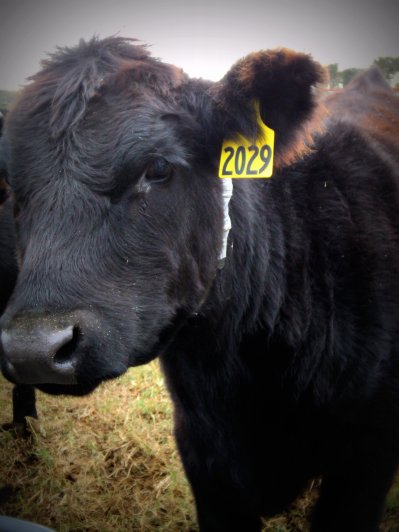Lately I have worked with Dr. Mark Alley, Dr. Matt Poore, and Dr. Sharon Freeman from NC State University on a research project underway at the CEFS Pasture-Based Beef Unit. It’s that time of year when we begin weaning the calves from their mothers onto pasture, and this can be one of the most stressful times of their lives! The current research project aims to compare three different weaning strategies to determine which is the most beneficial to the calf during this period: 1) late weaning, in which the calves are left with their mothers longer than the others, 2) abrupt weaning, and 3) quiet wean nose clips, which are designed to flip down over the calf’s mouth to prevent attempts to nurse.
The important things to assess during a weaning study are the calf’s general behavior and demeanor, feeding behaviors (including grazing, rumination, and attempts to nurse from mom), weight gain, and general activity level. We observed the calves and carefully documented their behaviors for three 1-hour observation sessions per day, for two different periods: 1) the week before weaning, and 2) the week after weaning.. In addition to our behavior reports, some of the calves wore activity monitors that recorded general activity through vibrations (similar to the pedometers that runners use to keep up with their speed and distance traveled). The calf above is sporting an activity monitor that is taped to a collar around its neck. That way, we have a 24/7 activity measurement that we can match up with our behavior reports during the observation period to see which calves were more active. If a calf is calm, it tends to ruminate while lying or standing and walk steadily to and from the hay bales, water trough, and salt lick. If a calf is stressed, it will pace along the fence line and bawl for its mom. We also weigh the calves at certain intervals to assess weight gain, which would give us an idea of which weaning strategy interrupts their feeding (and subsequently their growth) the least.
This is just some of the exciting new research happening at CEFS to improve our food animal welfare!

Lastly, here is a photo of me talking to Dean Richard Linton of the College of Agriculture & Life Sciences about the weaning study at the CEFS Pasture-Based Beef Unit! Read more about the Dean’s visit to CEFS!




